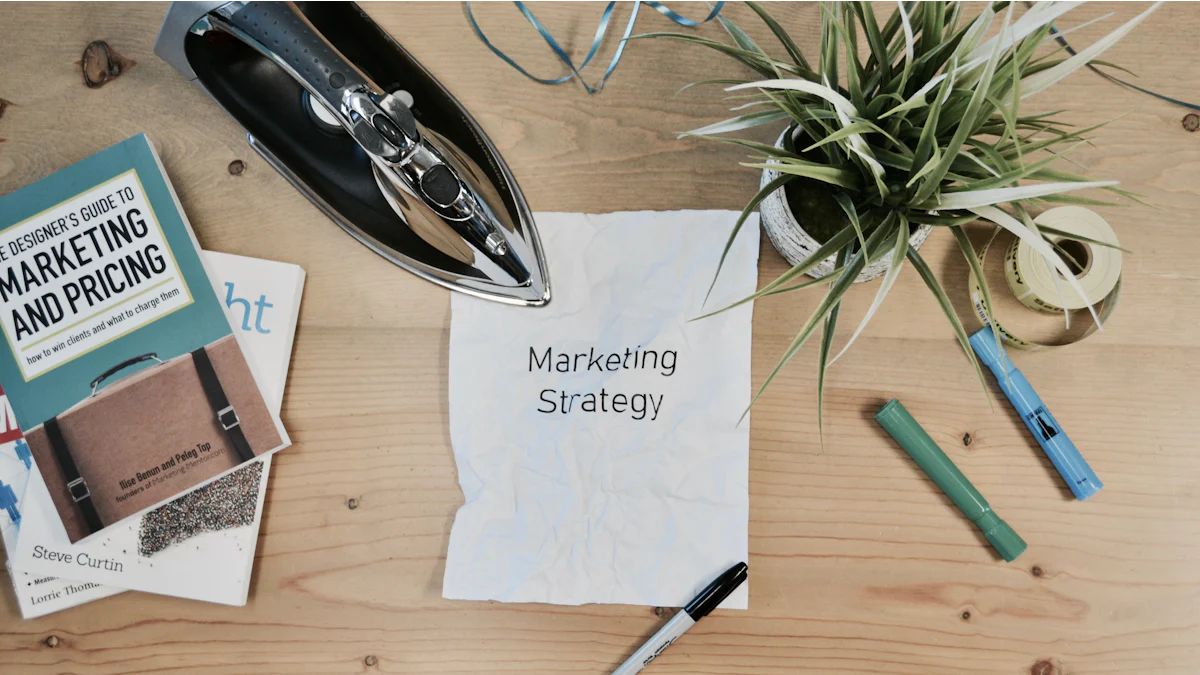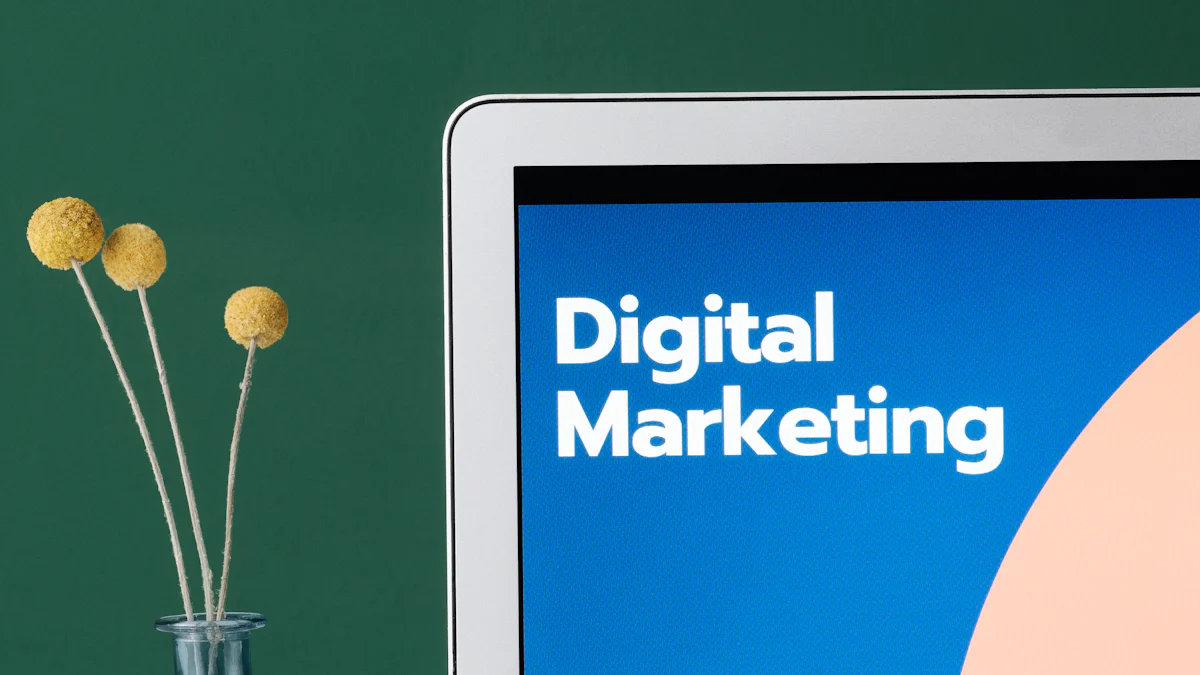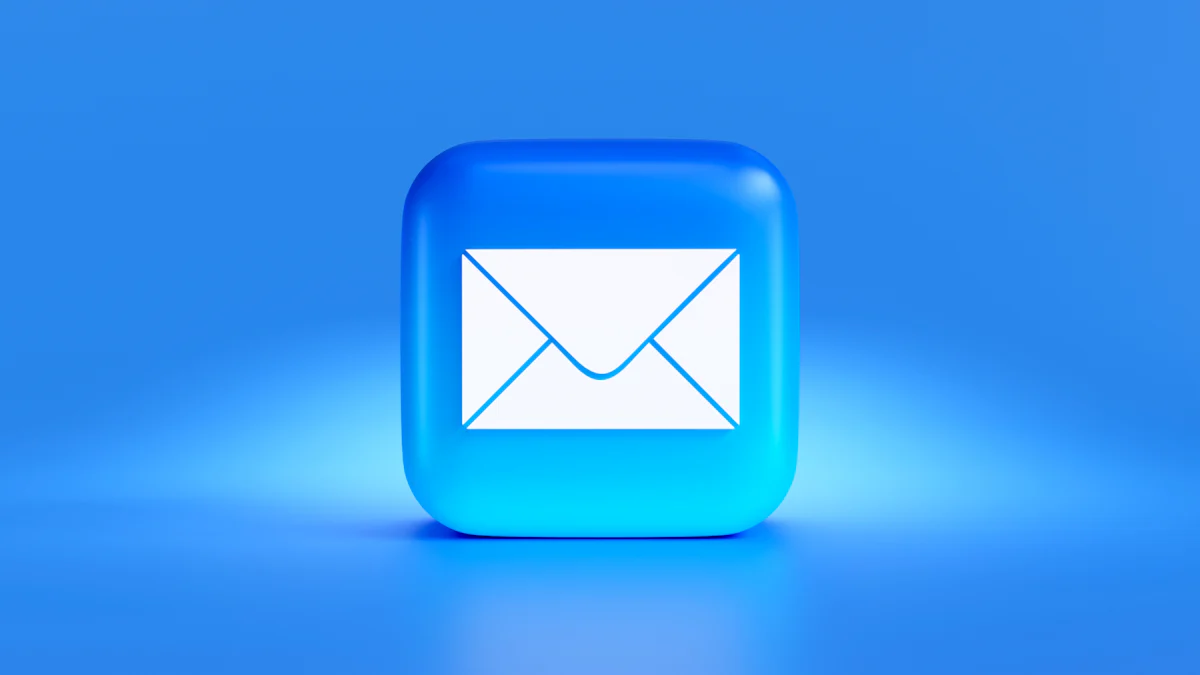Top Strategies for B2B Email Marketing Success in 2025

The world of B2B email marketing is transforming rapidly in 2025. You can no longer rely on generic campaigns to capture attention. Buyers expect hyper-targeted messages tailored to their needs, and advanced tools like AI-driven insights make this possible. Minimalist designs and multi-tiered email funnels are now essential for nurturing leads effectively.
Why should you adapt? Email marketing remains one of the most powerful tools for B2B businesses. With a click rate of 3.18%, it outperforms B2C campaigns. Plus, 42% of marketers rank email as their most effective channel. By embracing updated strategies, you’ll build stronger relationships, generate more leads, and drive measurable results.
Key Takeaways
Make your emails personal by using customer data. Tools like Success.ai and Yesware help you write messages that connect with readers.
Group your audience into smaller lists. Use things like age or actions to send messages that match their needs.
Use tools to send emails automatically. Programs like HubSpot help you stay in touch with leads while keeping it personal.
Make sure emails work well on phones. Check that they look good and load fast to keep readers happy.
Test different email ideas to improve them. Try out subject lines and designs to see what works best, then use that for future emails.
Core Strategies for B2B Email Marketing

Data-Driven Personalization
Using customer insights to create tailored content
To stand out in B2B email marketing, you need to personalize your email content using customer insights. Tools like Success.ai and Yesware make this process seamless. Success.ai uses AI to analyze recipient data and craft highly relevant messages, while Yesware provides real-time insights into email activity, such as open rates, helping you refine your approach.
Tool | Description |
|---|---|
Success.ai | Uses AI to create personalized email content based on recipient information, enhancing engagement. |
Yesware | Provides real-time insights into email activity, including open rates, to tailor communication. |
Klenty | Allows dynamic content blocks that adapt based on recipient data for personalized recommendations. |
GMass | Integrates with Gmail to personalize messages using merge tags for greetings and content sections. |
By leveraging these tools, you can personalize your email marketing strategy and deliver content that resonates with your audience.
Dynamic content for individualized messaging
Dynamic content takes email personalization to the next level. It allows you to create emails that adapt based on recipient data, such as industry, job title, or past interactions. For example, Klenty enables you to include dynamic blocks that recommend products or services tailored to each recipient. This approach ensures your emails feel relevant and timely, increasing engagement and driving better results.
Effective Segmentation
Segmenting audiences by behavior, industry, and demographics
To maximize the impact of your email marketing campaign, you must segment your audience effectively. Common segmentation criteria include:
Demographic Segmentation: Grouping by job title, decision-making authority, or company size.
Behavioral Segmentation: Targeting based on email engagement or purchase history.
Firmographic Segmentation: Categorizing by industry or company attributes.
Intent Segmentation: Focusing on audience attitudes and business goals.
Segmentation allows you to tailor your messaging to address specific pain points, making your emails more relevant and impactful.
Enhancing engagement through targeted messaging
Segmenting your audience improves engagement rates significantly. Tailored email content leads to higher open and click-through rates, stronger customer connections, and better conversion rates. For example:
Evidence | Explanation |
|---|---|
Higher open rates and click-through rates | Tailored email content leads to increased engagement from recipients. |
Improved conversion rates | Targeted campaigns result in better performance and ROI. |
Stronger customer connections | Customized content fosters loyalty and enhances relationships. |
By implementing email segmentation, you can create campaigns that resonate with your audience and drive measurable results.
Advanced Email Automation
Automating workflows for lead nurturing and follow-ups
Automation is a game-changer for B2B marketing. When you automate your campaigns, you can nurture leads at scale while maintaining a personal touch. Tools like HubSpot and Marketo enable you to send personalized emails based on recipient behavior, ensuring consistency and relevance. Automation also provides data-driven insights, helping you optimize your email marketing strategy for better performance.
Trigger-based emails for timely and relevant communication
Trigger-based emails are essential for effective email marketing. These emails are sent automatically based on specific actions, such as downloading a whitepaper or abandoning a cart. Examples include:
A follow-up email encouraging a prospect to complete their abandoned cart.
A time-sensitive promotional offer tied to an event, such as World AI Day.
These timely messages keep your brand top-of-mind and encourage recipients to take action, boosting your conversion rate.
Mobile Optimization in Email Marketing
Designing responsive and mobile-friendly email templates
In today’s B2B landscape, mobile optimization is no longer optional. Between 26-78% of emails are opened on mobile devices, depending on the industry. With 81% of mobile users preferring to check emails on their smartphones, your email marketing strategy must prioritize responsive design. A poorly optimized email risks deletion, as 50% of users will discard emails that don’t display well on mobile.
To create mobile-friendly templates, focus on responsive design that adapts to various screen sizes. Simplify your content to make it easy to read on smaller screens. Highlight key information at the top of the email to grab attention immediately. Visual elements should enhance your message, not distract from it. Finally, test your emails across multiple devices to ensure consistent performance. These steps will help you deliver effective email marketing campaigns that resonate with your audience.
Ensuring fast-loading emails for better user experience
Speed matters in mobile email marketing. Slow-loading emails frustrate users and reduce engagement. Optimize your images by compressing them without sacrificing quality. Use lightweight code to ensure your emails load quickly, even on slower networks. Keep your design clean and minimalistic to avoid unnecessary delays. By prioritizing speed, you’ll improve the user experience and increase the chances of your emails being read.
A/B Testing for Better Campaigns
Testing subject lines, CTAs, and layouts for optimization
A/B testing is a powerful tool for refining your email marketing strategy. Start by testing subject lines, as they directly impact open rates. Studies suggest that subject lines between 61-70 characters often perform better. Experiment with different call-to-action (CTA) buttons, as their wording and placement significantly influence click-through rates. Test various layouts to determine which design elements drive the most engagement. By analyzing these factors, you can create more effective email marketing campaigns.
Using test results to refine future email marketing strategies
The insights gained from A/B testing are invaluable for improving your strategy. Apply the winning elements from your tests to future campaigns. For example, if a specific subject line format boosts open rates, use it as a template for upcoming emails. Testing multiple versions of your emails generates data that enhances open rates, click-through rates, and conversions. Integrating these insights into your email marketing strategy ensures continuous improvement and better results over time.
Best Practices for 2025
Crafting Compelling Subject Lines
Writing attention-grabbing and curiosity-driven subject lines
Your subject line is the first impression your email makes. A compelling subject line grabs attention and sparks curiosity, driving higher open rates. Use personalization, urgency, or value-driven language to make your emails stand out. For example, subject lines like "Invitation to [recipient name] from [company name]" or "Limited time offer: Get 20% off your first purchase!" have proven effective in B2B email marketing.
Subject Line Example |
|---|
[Company Name] Marketing Newsletter |
State of the Consumer Survey [Company Name] Update (Date) |
Limited time offer: Get 20% off your first purchase! |
Avoiding spam triggers to maintain deliverability
Avoiding spam triggers is critical for effective email marketing. Words like "Free," "Earn," or "Exclusive" can send your emails straight to the spam folder. Emojis, excessive punctuation, and all caps also harm deliverability. Instead, focus on clear, professional language. Test your emails before sending to ensure they pass spam filters and reach your audience.
Ensuring Email Security
Implementing DMARC, SPF, and DKIM protocols
Email security is non-negotiable in 2025. Implementing DMARC, SPF, and DKIM protocols protects your domain from phishing attacks and improves deliverability by up to 15%. These protocols also provide visibility into unauthorized email activity, helping you maintain user trust. With 96% of phishing attacks arriving via email, securing your domain is essential for safeguarding your reputation.
Benefit | Description |
|---|---|
Prevention of Email Fraud | Reduces unauthorized use of your domain for fraudulent emails. |
Improved Deliverability | Increases email deliverability by 10-15%. |
Enhanced Visibility and Control | Provides insights into unauthorized email flows. |
Protection of User Trust | Maintains trust, critical as phishing attacks can cost over $1.6 million on average. |
Educating teams on phishing and fraud prevention
Your team plays a vital role in email security. Train them to recognize phishing attempts and avoid clicking on suspicious links. Regular workshops and simulated phishing tests can reinforce these skills. A well-informed team strengthens your overall email marketing strategy.
Multi-Channel Integration
Combining email marketing with social media and CRM tools
Integrating email marketing with social media and CRM tools enhances your campaigns. CRM systems improve segmentation, enabling you to send tailored messages to specific groups. Social media amplifies your reach, allowing you to repurpose email content for platforms like LinkedIn or Twitter. This multi-channel approach ensures consistent messaging and maximizes engagement.
Enhanced targeting: CRM integration allows precise segmentation.
Effective communication: Personalized messages crafted using CRM insights.
Increased productivity: Native email functionality within CRMs saves time.
Using retargeting to reinforce email campaigns
Retargeting strengthens your email marketing strategy by re-engaging users across channels. Companies like Amazon and Spotify excel at this. Amazon sends emails showcasing products based on browsing history, while Spotify offers personalized playlists. These strategies remind users of your value and encourage them to take action.
Emerging Trends in B2B Email Marketing

AI-Driven Insights
Leveraging AI for predictive analytics and customer behavior insights
AI is revolutionizing how you approach email marketing strategy in B2B. Predictive analytics tools like HubSpot AI and Reply.io help you anticipate customer behavior and optimize your campaigns. HubSpot AI offers features like Campaign Assistant and AI Email Writer, while Reply.io automates cold email campaigns and scores responses to identify high-potential leads.
AI also enhances your ability to deliver personalized content. It analyzes customer interactions to tailor messages, improving engagement and conversion rates. Predictive timing ensures your emails land in inboxes at the perfect moment, increasing open rates. With AI, you can even generate lookalike audiences to expand your reach and target prospects similar to your best customers.
Benefit/Strategy | Description |
|---|---|
AI tailors content based on customer responses, boosting engagement. | |
Predictive Timing | AI determines the best times to send emails, improving open rates. |
Lead Scoring | AI assigns scores to leads, helping you focus on high-conversion opportunities. |
Lookalike Audience Generation | AI identifies new prospects similar to your existing customers. |
Automating content creation with AI tools
AI tools like Predictive AI simplify content creation by generating subject lines, email copy, and even layouts. These tools save time and ensure consistency across your campaigns. For example, AI can test multiple subject lines to find the one that drives the most engagement. By automating these tasks, you can focus on refining your overall email marketing strategy.
Accessibility in Email Marketing
Designing emails for visually impaired users
Accessibility is no longer optional in B2B email marketing. You must design emails that cater to visually impaired users to ensure inclusivity. Start by using a text-to-image ratio of 80:20 and adding alt text to all images. Alt text helps screen readers describe visuals, making your content more accessible. Use bulletproof buttons sized between 42px and 72px for easy navigation. Left-align your text and avoid all caps to improve readability.
Responsive design is also critical. Your emails should adjust seamlessly to different devices, ensuring optimal viewing for all users. Proper color contrast and sufficient white space reduce visual clutter, making your emails easier to read. These strategies enhance the user experience and broaden your audience reach.
Using alt text and clear fonts for better readability
Alt text ensures your message remains clear even if images fail to load. It also helps visually impaired users understand your content through screen readers. Use accessible fonts with even spacing and set the body text size to 16px for optimal readability. Avoid excessive bold or italic text, as it can confuse readers. These small adjustments make a big difference in how your audience engages with your emails.
Minimalistic Email Design
Focusing on clean layouts and concise messaging
Minimalistic email design is a growing trend in B2B marketing. Clean layouts and concise messaging help you communicate your value quickly. For example, Smartsheet’s new user emails use large visuals and minimal text to highlight key benefits. Similarly, Evernote’s emails focus on educational content with clear calls to action, driving engagement.
To adopt this approach, structure your emails with headings, subheadings, and bullet points. Simplify your content to guide readers naturally through the message. A clear and focused design ensures your audience understands your offer without feeling overwhelmed.
Reducing visual clutter to improve engagement
Visual clutter distracts your audience and reduces engagement. Keep your designs simple and focused. Use white space strategically to make your emails easy to scan. Experiment with plain text emails for a more personal touch. Datawrapper’s “What’s New” emails, for instance, tie updates directly to user impact, keeping the content relevant and engaging. By reducing clutter, you create a seamless experience that encourages action.
Adopting these strategies in 2025 will transform your B2B email campaigns into powerful tools for growth. By leveraging AI-driven insights, creating precise buyer personas, and designing minimalistic emails, you’ll connect with your audience on a deeper level. Multi-tiered email funnels and smart drip campaigns will nurture leads effectively, while accessibility ensures inclusivity and compliance.
Start optimizing today. Test your emails, segment your lists, and track results to refine your approach. Provide high-quality content with clear calls to action. These steps will improve engagement, boost ROI, and position your business as a leader in B2B email marketing.
According to Intuit Mailchimp, segmentation alone can increase clicks by 100.95% and open rates by 14.31%. Take action now to see these results for yourself.
FAQ
What is the best way to personalize B2B email campaigns?
Use customer data like industry, job title, or past interactions to craft tailored messages. Tools like AI-driven platforms can help you analyze data and create dynamic content that resonates with your audience. Personalization boosts engagement and builds stronger relationships.
How often should you send B2B emails?
The ideal frequency depends on your audience and goals. Start with one to two emails per week. Monitor engagement metrics like open and click-through rates to adjust your schedule. Consistency is key, but avoid overwhelming your recipients.
How can you improve B2B email deliverability?
Implement email security protocols like DMARC, SPF, and DKIM. Avoid spam triggers in subject lines and content. Regularly clean your email list to remove inactive contacts. These steps ensure your emails reach the right inboxes.
Why is segmentation important in B2B email marketing?
Segmentation allows you to send targeted messages to specific groups based on behavior, demographics, or industry. This approach increases relevance, improves engagement, and drives better results. Tailored content shows your audience you understand their needs.
What role does mobile optimization play in B2B email marketing?
Mobile optimization ensures your emails display correctly on smartphones and tablets. With many professionals checking emails on mobile devices, responsive design and fast-loading templates are essential. A mobile-friendly approach enhances user experience and boosts engagement.
See Also
Exploring Upcoming B2B Content Marketing Trends for 2024
Enhancing Email Engagement: Effective Strategies for Blog Traffic
Become a Skilled Content Marketing Strategist by 2024
Five Effective Strategies to Boost Healthcare Content Marketing
Comprehensive Guide to Achieving SaaS Content Marketing Success

